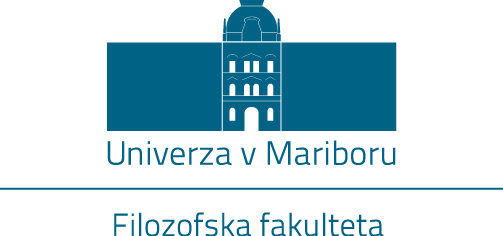
Betnava Manor
Location: Streliška ulica 150
Architects: Johann Nepomuk Fuchs, Joseph Hueber
Time of construction: 16th-18th century
The castle was first mentioned under the name Wintenaw in 1319, when members of the knightly family Winden were the first owners and possibly the commissioners of the first court as well. The noble family of Auersperg probably became the owner of the manor at the beginning of the 16th century and definitely before 1542. In 1555, Wolf Engelbert Auersperg sold the manor to Lucas Szekely. The noble family of Herberstein became the owners as early as 1587. Johann Jacob Count of Khissl bought the estate in 1677, but in 1685, the manor burnt down. The Counts of Brandis, who inherited Betnava along with other joint properties in 1727, allegedly renovated the building. Betnava was in possession of the Brandis family until 1863, when it became the summer residence of the Lavantine bishops. In 1941, German invaders seized the manor from the Diocese. After the war, it became state property, which it stayed until 1999, when it was named a cultural monument of state significance and was managed by Agrokombinat Maribor. After denationalizations, the Maribor Diocese regained the manor in 2000, and gave the building rights to Betnava d.o.o. In 2006 and 2007, the Maribor Diocese employed experts to come up with a preservation plan for the restoration and presentation of the monument. The manor, which is still being renovated, is to be used for various purposes.
According to folk tradition, a "white" or "old" town is supposed to be sunk in the vicinity of the manor. Old records, some archaeological remains and new research show that Betnava is an important archaeological site. It is likely that a road towards Ruše branched off somewhere near the antique road that connected Celeia with Flavia Solva, which is why a smaller road station and later, in the 3rd or 4th century, a manor house for horse breeding was established here. There is no information about the original medieval court; however, a larger residential building definitely stood there before the Renaissance manor of Betnava was built. In 1511, Lavantine bishop Leonhart Pewerl consecrated St. Mary's chapel in Betnava, which was probably commissioned by the new owners, the Counts of Auersperg. The Renaissance building, as we know it from Vischer's depiction from around 1681, is usually dated in the second half of the 16th century. Nace Šumi dated it between 1530 and 1580. Based on this, the builders of the manor would be either the Auersperg or the Szekely family. It is known that soon after the Herberstein family took ownership in 1587, an evangelical pastoral base with a wooden prayer room, a cemetery, and a house for the preacher and for the sexton, were built in the vicinity of the castle (allegedly in the place of the present day oak grove). In 1600, the counter-reformation committee destroyed the protestant buildings. The Renaissance manor from Vischer's depiction in 1681 exhibits all elements of the residential-fort architecture of that time. The single-storey building with four wings was fortified on the corners with equally high, thickset towers, its solidity emphasised by the ground floor, extended in the lower part. The manor was surrounded by a water-filled moat. An embankment lead over the moat towards the portal of the manor.
In the 18th century, the manor was rebuilt in a Late Baroque style. According to Jože Mlinarič, the rebuilding happened in the time of Henrik Count of Brandis, when the chapel of the Holy Cross (1781 or 1784) was added to the castle. Ivan Stopar, on the contrary, claimed that the renovated exterior shows all stylistic characteristics of the High Baroque of the second quarter of the 18th century. Metoda Kemperl dated the rebuilding and the chapel as being built in the 1770s or 1780s and attributed it to architect Johann Nepomuk Fuchs (1727-1804). Joseph Hueber (1715 or 1717-1787) is mentioned as the co-architect of the Baroque construction phase.
The Baroque reconstruction was limited to the main, northern wing. The main and the largest pavilion is placed in its centre, while strongly protruding side pavilions, the successors of the Renaissance corner towers, are placed on both corners. The entrance projection is emphasised by window frames with Late Baroque decoration, Corinthian pilasters, interesting three-part frieze and a small triangular pediment with putti holding gardening tools in their hands. The façade is further divided by painted lesenes and partially by rustication on the ground floor. A balcony with a wrought iron fence, standing on four slim columns with capitals of the Ionic order and flower decorations is placed above the main portal. We enter through the portal in the main projection into the entrance hall, which has a barrel vault with transverse arches. The Baroque three-flight stone staircase with a carved balustrade shaped as a band braid leads to the first floor. The vestibule on the first floor has marble pavement and a cove vault, which is decorated with oval stucco frame above the profiled beam. The Baroque stone portal leads to the Great Hall, which has an illusionistic ceiling painting and marbled walls divided with pilasters. Other representational rooms are located on the floor as well. A high, two-storey chapel from 1781 leans against the right pavilion via a small connecting wing. The chapel ruins the symmetry of the manor, but emphasises the uniqueness of the sacred place. The manor's courtyard has arcades on both projections, while the arcades on the storey of the central tower staircase are walled up. Above one of the courtyard windows in a walled up arcade there is a plaque with an illegible inscription and the year 1881, which probably marks the date of the arcade construction and maybe even of another renovation of the manor. After the beginning of the 20th century, they removed the turret that decorated the roof of the chapel and the attic windows from the main wing; the latter can be seen in older depictions. The date of the demolishment of the southern transverse wing with both towers is unknown. According to Stopar, this happened in the second quarter of the 18th century, though the uninterrupted four-angled plan of the manor described as a "four-angled" castle is still visible on the Josephine map from 1763-1787. The only thing preserved from the southwest tower is a vaulted basement with a central column. In place of the southeast tower stood a shed, but there is no trace of the tower left. Part of the basement in the entrance, almost the whole basement of the tower in the northwestern part of the manor and traces of the moat are also preserved from the manor's Renaissance phase. The eastern wing is comprised of a vaulted ground floor. It is possible that it, or at least its building outline, is the same as the one from the 16th century. The western wing, which has the same vault as the eastern one, was added on in the 1960s. In the 20th century, the coat of arms of the Lavantine prince bishop Dr. Michael Napotnik (1850-1922, bishop 1889-1922) was placed in the middle of the entrance pavilion frieze (inscription "QUIS UT DEUS - FORTITUDO MEA" next to the coat of arms is his bishopric slogan).
The castle garden on Adriana Island known from Vischer's depiction was surrounded by a wide and deep rectangular moat. This unusual arrangement has been preserved to this day with a few changes. The supposed Renaissance garden had a distinctly symmetrical shape; it was composed of sixteen garden beds, which were surrounded by trees planted at the edges of the rectangular island. A wooden bridge leading to the island was placed in axis with the castle portal. The subsequent image of the Baroque park is unknown. In the first half of the 19th century, the area around the manor was redesigned in the spirit of the English landscape style.
Besides Dornava, Betnava is the most beautiful monument of Late Baroque profane architecture in Slovenian Styria.
Renata Komić Marn
(23 September 2014)








